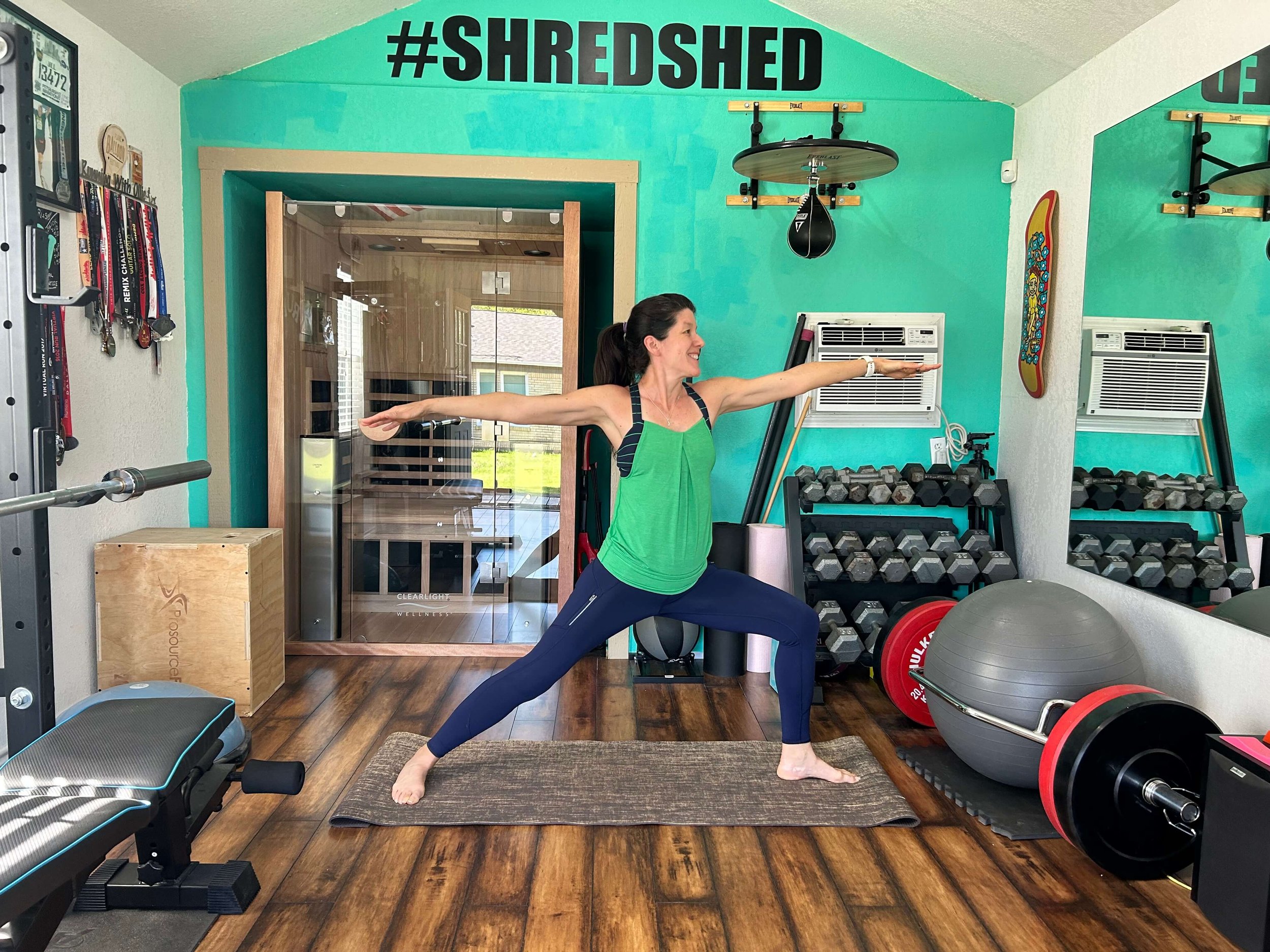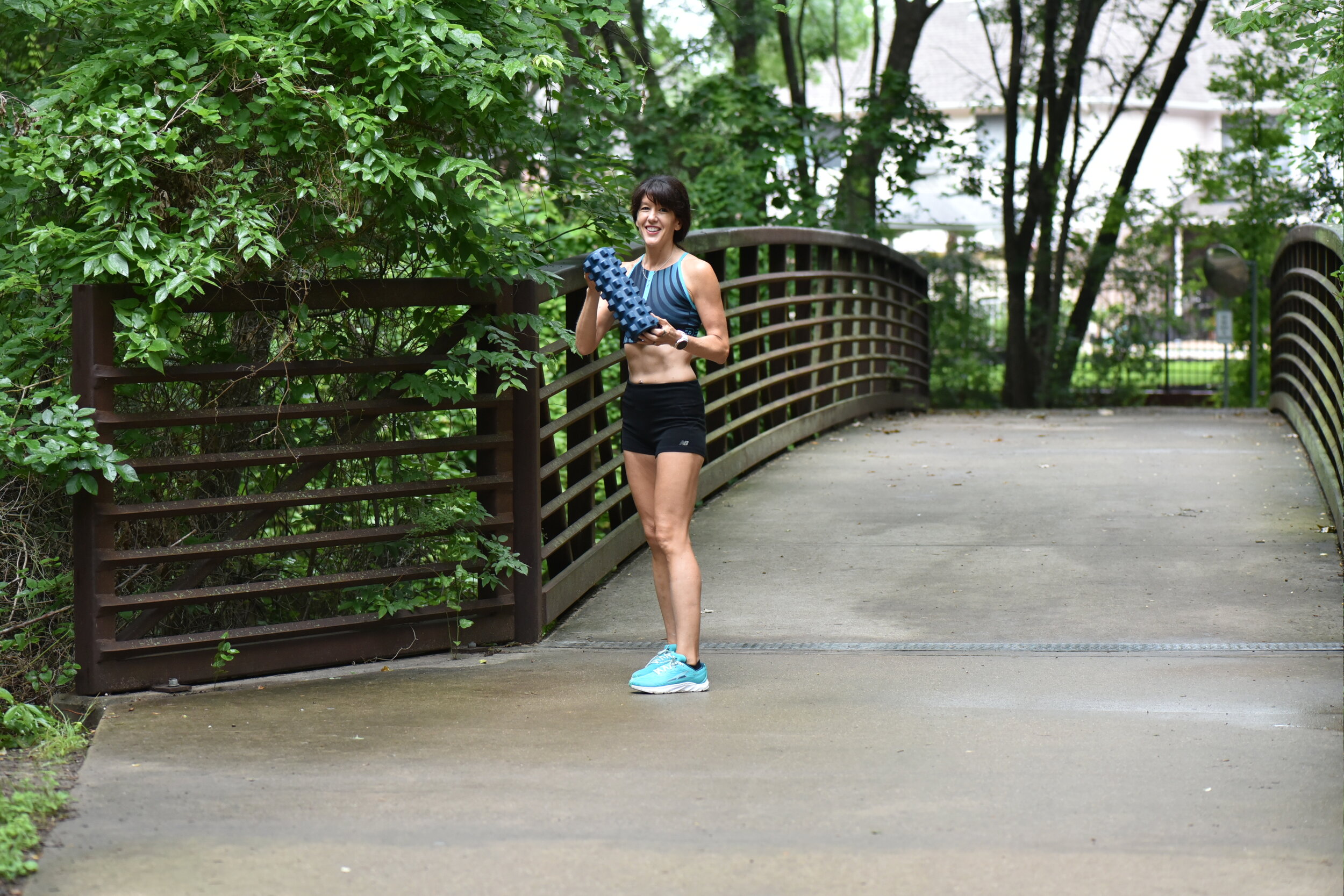Welcome to the latest edition of workout Wednesday! This week we are going to H.I.I.T the stairs! H.I.I.T. means High Intensity Interval Training, of course. In this workout we will do an interval of high intensity stair climbs in between each strength move.
Stair climb workouts are beneficial for runners because like hills, stair climbing helps build strength, speed and running efficiency. Work in stair or hill climbs once or twice a week in your schedule and you'll start to see improvements in your running. I love this workout because it combines cardio and strength in one efficient workout, all you need is a set of stairs.
I went to my local track and used the stadium stairs (the same location we will be holding Fit to Run boot camps in January) but this workout can be done on any set of stairs inside or out. There were 30 steps in my climb. If you don't have as many steps in your staircase, just repeat the climb until you reach 30 steps. For example if your staircase has only 10 steps, repeat it 3 times.
Always warm up before beginning any workout.
STAIR CLIMBS
FORM
Keep your chest and head up with your shoulders back, eyes looking forward with your neck neutral. Keep your hands loose (imagine holding a potato chip between your thumb and pointer finger). Pump your arms at a 90 degree angle and do not allow them to cross over the front of the body. Lift your knees high as you progress to the next step. I like to think about moving vertically rather than forward. Bring those knees up high.
SPEED
Start the bottom at a relaxed pace, gradually increasing speed as you progress to the top. The first few times it may be enough to just jog, you'll feel the change in intensity compared to running on flat ground. Over time you can increase speed as you improve.
RECOVERY
Recover by walking back down to the bottom before you perform each strength move.
THE WORKOUT
STAIR RUN
LATERAL SQUATS LEAD WITH LEFT LEG / LATERAL SQUATS LEAD WITH RIGHT LEG x 8 REPS EACH LEG
Lower into a squat and take one large step to the side up the stairs. Staying in the low position bring your other leg up so both feet are on the same step, that is one rep. Perform 8 reps up the stairs leading with your left leg, then face the other direction to perform 8 reps leading with your right leg. Stay low! Walk back down to bottom.
STAIR RUN
SQUAT JUMPS x 8 REPS
Lower into a squat position and jump to the next step with both feet, landing softly in the low position (do not lock your knees). Walk back down to bottom.
STAIR RUN
SPLIT LUNGE x 8 REPS EACH LEG
With one leg propped up behind you on the first step lower into a lunge position. Repeat for 8 reps then switch legs.
STAIR RUN
TRICEP DIPS x 8 REPS
Position your hands shoulder width apart behind you on the step. Bend your elbows behind you to lower your body.
STAIR RUN
PUSH UPS x 8 REPS
Start in straight arm position with your hands placed a little wider than your shoulders. Keeping your body in a straight line, while engaging your core slowly lower your chest to the step.
Rest for one minute (or as much as needed) and repeat two more times.
Always allow at least 48 hours between hard workouts. Never do intense workouts on back to back days. Your body repairs, adapts and grows stronger during rest (not during the workout), so it is important to allow it the proper recovery time.
Give it a try and let me know what you think! Any questions? Let me know in the comments.
Like this post? It helps me when you share or save to Pinterest.





































